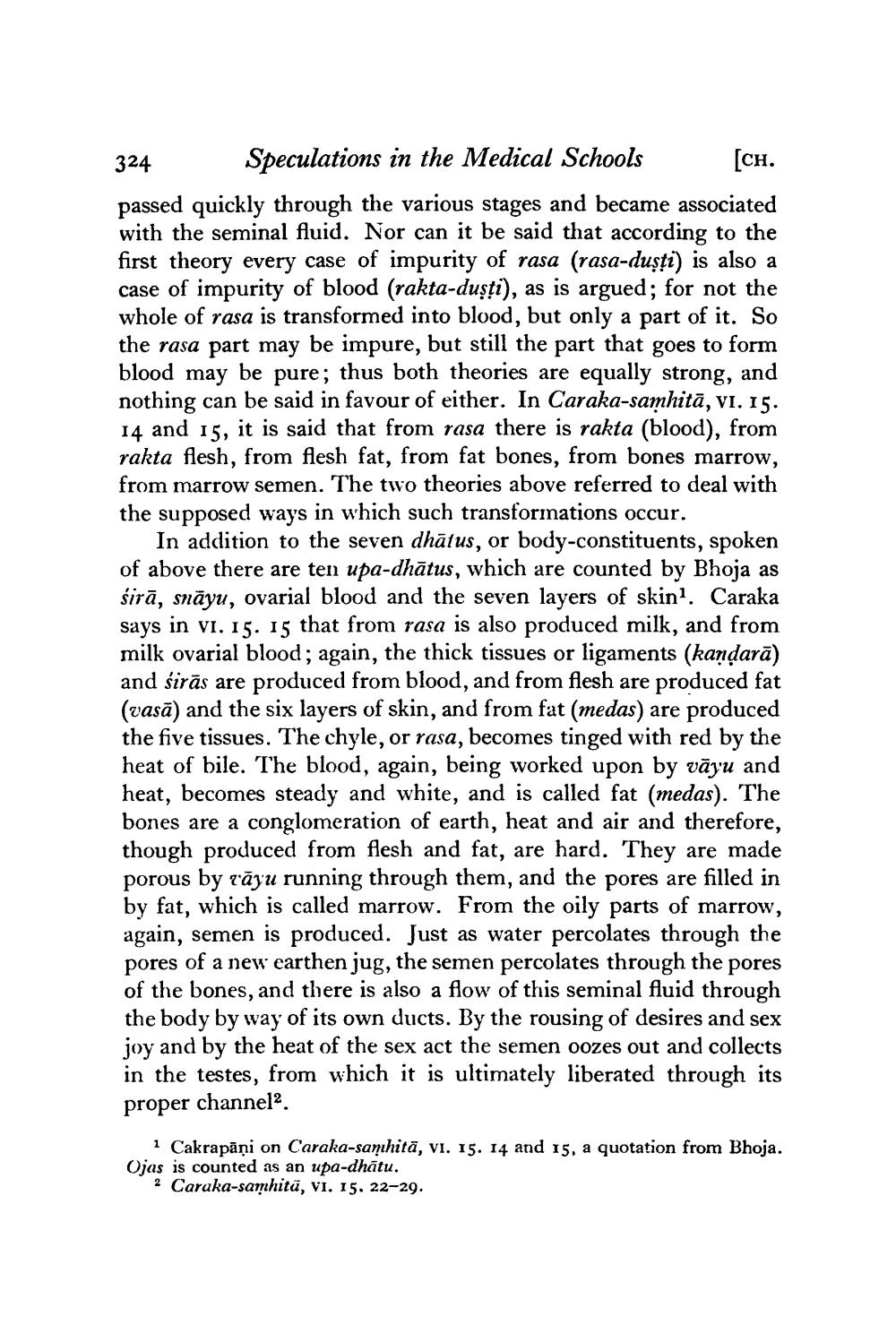________________
324
P
Speculations in the Medical Schools [CH. passed quickly through the various stages and became associated with the seminal fluid. Nor can it be said that according to the first theory every case of impurity of rasa (rasa-duşți) is also a case of impurity of blood (rakta-duşți), as is argued; for not the whole of rasa is transformed into blood, but only a part of it. So the rasa part may be impure, but still the part that goes to form blood may be pure; thus both theories are equally strong, and nothing can be said in favour of either. In Caraka-samhitā, vi. 15. 14 and 15, it is said that from rasa there is rakta (blood), from rakta flesh, from flesh fat, from fat bones, from bones marrow, from marrow semen. The two theories above referred to deal with the supposed ways in which such transformations occur.
In addition to the seven dhātus, or body-constituents, spoken of above there are ten upa-dhātus, which are counted by Bhoja as śirā, snāyu, ovarial blood and the seven layers of skin?. Caraka says in vi. 15. 15 that from rasa is also produced milk, and from milk ovarial blood; again, the thick tissues or ligaments (kandarā) and sirās are produced from blood, and from flesh are produced fat (vasā) and the six layers of skin, and from fat (medas) are produced the five tissues. The chyle, or rasa, becomes tinged with red by the heat of bile. The blood, again, being worked upon by vāyu and heat, becomes steady and white, and is called fat (medas). The bones are a conglomeration of earth, heat and air and therefore, though produced from flesh and fat, are hard. They are made porous by tāyu running through them, and the pores are filled in by fat, which is called marrow. From the oily parts of marrow, again, semen is produced. Just as water percolates through the pores of a new earthen jug, the semen percolates through the pores of the bones, and there is also a flow of this seminal fluid through the body by way of its own ducts. By the rousing of desires and sex joy and by the heat of the sex act the semen oozes out and collects in the testes, from which it is ultimately liberated through its proper channel2.
1 Cakrapāņi on Caraka-samhitā, vi. 15. 14 and 15, a quotation from Bhoja. Ojas is counted as an upa-dhātu.
2 Caraka-samhitū, vi. 15. 22-29.




